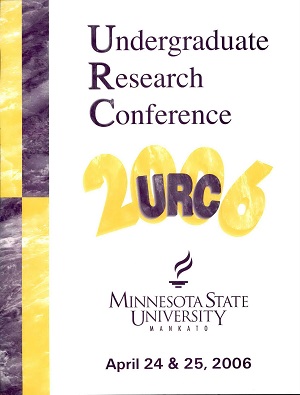Are European Journals More Likely to Publish Positive CAM Trials than American Journals?
Location
CSU 253
Start Date
24-4-2006 10:30 AM
End Date
24-4-2006 12:00 PM
Student's Major
Biological Sciences
Student's College
Science, Engineering and Technology
Mentor's Name
Bradley J. Cook
Mentor's Department
Biological Sciences
Mentor's College
Science, Engineering and Technology
Description
The objective of this study was to assess the presence of publication bias in clinical trials involving complementary and alternative medicine treatments published in the highest impact factor European and US journals. All clinical trails with complementary medicine treatments published in the 4 highest impact factor general medicine journals were abstracted using Medline (PubMed). The search was performed using the 'Journals database' in PubMed. Three reviewers abstracted data from the individual articles using the abstract and full text of the studies. Univariate and multivariate logistic regression analyses were preformed using outcome of the study (positive or negative) as the dependent variable and country of journal, randomization, blinding, sample size, CAM intervention and duration of follow up as the predictor variables. A total of 705 clinical trials were abstracted of which 224 met the inclusion criteria. In the logistic regression model, no significant difference was noticed between the European and American journals in randomization, blinding, sample size, CAM intervention and duration of follow up. Adjusting for these variables in the multivariate model, the odds ratio of US vs. European journals to publish a positive CAM trial was 0.284 (95% confidence interval 0.153 to 0.527). Amongst the highest impact factor general medicine journals, European joumals are significantly more likely to publish positive CAM trials compared to American journals. This probably represents a true publication bias, and could be related to the type of studies received by a journal or a bias in editorial decision making.
Are European Journals More Likely to Publish Positive CAM Trials than American Journals?
CSU 253
The objective of this study was to assess the presence of publication bias in clinical trials involving complementary and alternative medicine treatments published in the highest impact factor European and US journals. All clinical trails with complementary medicine treatments published in the 4 highest impact factor general medicine journals were abstracted using Medline (PubMed). The search was performed using the 'Journals database' in PubMed. Three reviewers abstracted data from the individual articles using the abstract and full text of the studies. Univariate and multivariate logistic regression analyses were preformed using outcome of the study (positive or negative) as the dependent variable and country of journal, randomization, blinding, sample size, CAM intervention and duration of follow up as the predictor variables. A total of 705 clinical trials were abstracted of which 224 met the inclusion criteria. In the logistic regression model, no significant difference was noticed between the European and American journals in randomization, blinding, sample size, CAM intervention and duration of follow up. Adjusting for these variables in the multivariate model, the odds ratio of US vs. European journals to publish a positive CAM trial was 0.284 (95% confidence interval 0.153 to 0.527). Amongst the highest impact factor general medicine journals, European joumals are significantly more likely to publish positive CAM trials compared to American journals. This probably represents a true publication bias, and could be related to the type of studies received by a journal or a bias in editorial decision making.
Recommended Citation
Knudsen, Kayla L.. "Are European Journals More Likely to Publish Positive CAM Trials than American Journals?." Undergraduate Research Symposium, Mankato, MN, April 24, 2006.
https://cornerstone.lib.mnsu.edu/urs/2006/oral-session-D/1



